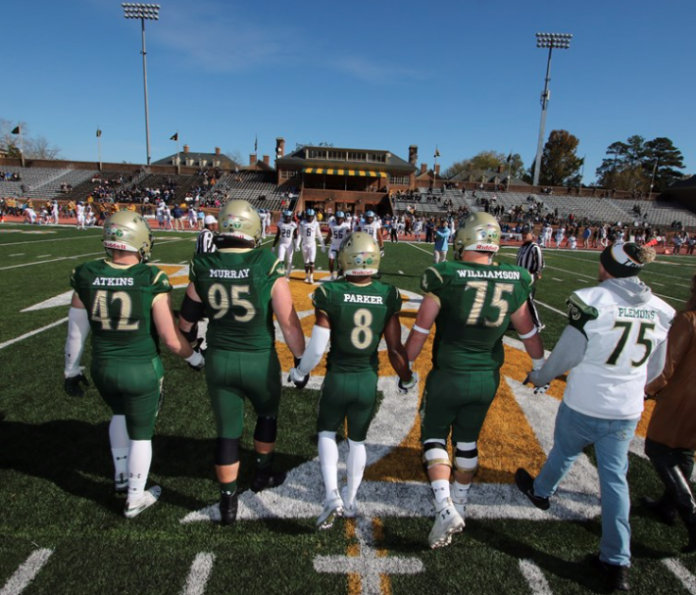Two weeks ago, something happened that most sports fans considered entirely inconceivable or, at the very least, quite unlikely.
Major Football Bowl Subdivision teams held college football games.
Ever-increasing momentum throughout the summer, as the COVID-19 pandemic overwhelmed the country, pointed to no football at all in the fall, much less at the collegiate level with uncompensated athletes, college campuses and uncontrollable exposure all appearing unavoidable. But nonetheless, the FBS, and most notably its Power Five conferences (SEC, ACC, Pac-12, Big 10 and Big 12), have all announced plans to resume their seasonsz, albeit on different schedules.
The Big 12, SEC and ACC are already underway with the Big 10 starting Oct. 23 and the Pac-12 resuming Nov. 6.
But this is not the case in the Football Championship Subdivision, the level that features the William and Mary Tribe along with the rest of the Colonial Athletic Association. The CAA was quick on the draw of cancelling upcoming competitions, nixing fall athletic competition in mid-July. It is in the vast majority of the division, with every conference cancelling fall play and only 15 FCS teams intending to complete a non-conference season in 2020.
This trend of cancellation versus announcing plans to play shines an interesting light on the revenue structures of many colleges as well as the regional values of the country. Power Five conferences make a killing off football in a variety of aspects, from ticket sales to TV deals to sponsorships. For example, the University of Wisconsin earned almost $46 million in media rights related to football and $500,000 to sponsorship and royalty revenue last year.
Also notable, as predicted by many, is that the south and southeastern parts of the country have been on the forefront of the play-in-2020 movement. It is well-known that football makes up a substantial part of southern culture and southern college culture, which is also evident in business and civic circles.
“College football is where it’s at in the South,” University of Georgia Grady Sports Media Initiative Associate Director Welch Suggs said of the season in an Inside Higher Ed blog post. “No other sport has the footprint that football does, in terms of the size and scope or where it fits in our psychology.”
And so much of the country is pushing forward with that effort, taking as many precautions as possible against the virus. According to physician, epidemiologist and Duke University professor Chris Hostler in the same article, officials have a “very good understanding” that there will be COVID-19 outbreaks despite any combative efforts in the sport.
But at the other end of the spectrum is the College, with no fall sports and a practicing-but-not-playing football program. Members of the team will retain this year of eligibility and build chemistry, but not take the field until 2021. This is the first time with no Tribe football during traditional months since 1943.
For context, the 2018-19 football season generated $5.4 million in revenue for the College.
Tribe head coach Mike London expressed support of the decision amid disappointment for the lost year, while noting that the decision extends not just to the football team, but to the school community and the region at large.
“I’d rather be safe beyond measure,” London said. “There probably are going to be a lot of people who are upset about this, but that’s first and foremost to me. You can say ‘we have to play football,’ but how will it affect the testing not only within our school but in the area? There’s so many other things that are a domino effect that go into (whether) you have a season or not.”
So, football rolls on, but only in select areas with select budgets and revenues. It remains to be seen how the seasons will fare as the temperatures cool down and the virus progresses, but as for the Tribe, on to 2021 and plenty of extra practice.

